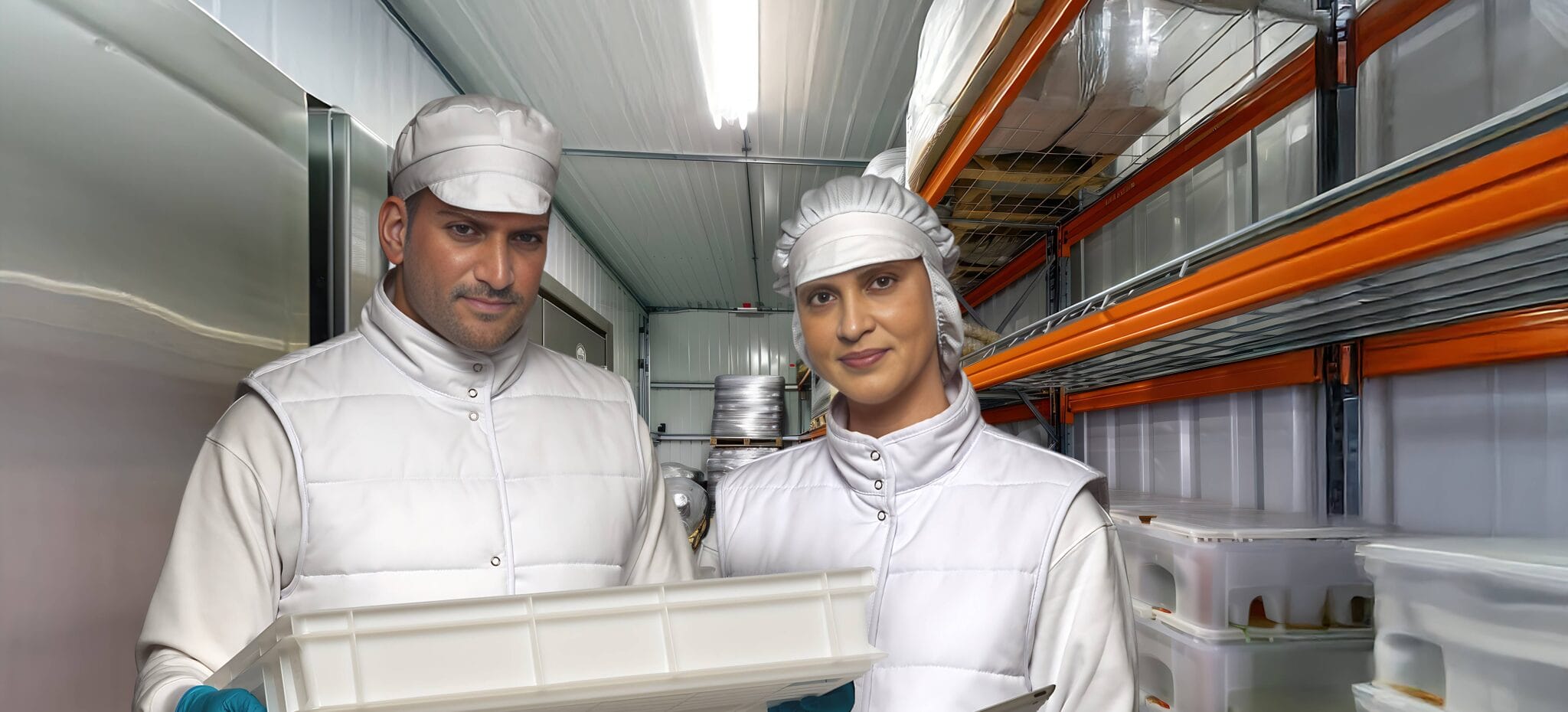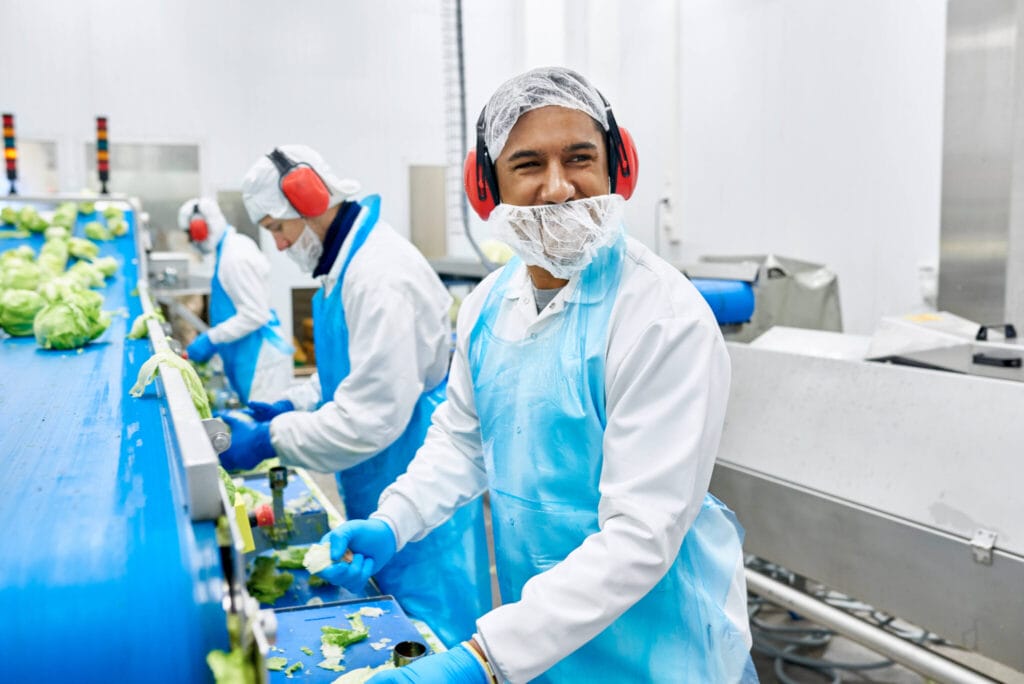
The growing demand for antimicrobial food production uniforms
A food production uniform is a hygiene control tool. It separates street clothes from production areas, reduces contamination risk, and supports audits. Many food brands now go a step further and choose garments with antimicrobial properties. The goal is simple. Keep bacterial growth on textiles down between washes, improve odour control for wearer comfort, and add another barrier to your HACCP plan.
Why is demand rising?
- Hygiene rules are clear: Food handlers must wear suitable, clean and, where necessary, protective clothing. Uniforms that stay cleaner for longer within a shift, and that are easy to launder to a hygienic standard, help you meet this baseline.
- Audits are tougher: BRCGS Requires protective clothing that prevents contamination, with design details such as no external pockets above the waist and no sewn‑on buttons when handling materials intended for direct food contact. The right food processing uniform helps you comply without constant coaching and supports a robust garment compliance audit process.
- Post‑pandemic expectations persist: Buyers, retailers, and auditors ask more questions about hygiene than five years ago. Market analysts report steady global growth in antimicrobial textiles, driven by hygiene awareness and functional fabrics in workplaces.
What “antimicrobial” means for a food site:
Antimicrobial textiles are fabrics that inhibit the growth of specified bacteria on the fabric surface. Performance is normally verified by standard tests such as ISO 20743, which measures antibacterial activity on textiles. Ask suppliers for test reports that state test organism, method, and log‑reduction.
This is not a substitute for cleaning, hand hygiene, or correct change frequency. Clothing can pick up microorganisms and transfer them to hands or nearby surfaces. Good uniform practice, laundering, and handling rules are still essential. Studies show bacteria move between fabrics and skin during contact, which is why uniforms must be managed as part of the wider HACCP system.
Benefits you can measure:
- Lower bacterial growth on the garment fabric between washes. Treated fibers slow proliferation of common test organisms when assessed under lab methods such as ISO 20743. This helps support in‑shift hygiene when paired with your normal change policy.
- Better wearer experience. Odour build‑up is slower, which helps teams feel comfortable and keep PPE on correctly for the whole shift.
- Cleaner audits and simpler training. When the food safety apparel is designed for the standard, operators spend less time adjusting clothing and more time on process steps.
Compliance points to check before choosing a workwear partner:
- Hygienic processing of textiles: Make sure your laundry provider operates to EN 14065 (RABC), which is a risk‑based system that assures the microbiological quality of processed textiles. This protects garments from re‑contamination between wash tunnel and the delivery rack.
- Design for food production: Choose food service uniforms that meet site risk. For high‑care and high‑risk areas, select garments with secure fastenings, no external upper‑body pockets, and no sewn‑on buttons. Provide enough changes per person so contaminated or soiled clothing can be replaced immediately. This is where safety workwear plays an important role — ensuring protection, hygiene, and comfort without compromising compliance.
- Proven test methods: Specify ISO 20743 or equivalent, ask for test organisms and wash‑durability data after realistic laundering cycles.
How antimicrobial uniforms fit into HACCP:
Textiles are one of several potential contact points in a plant. Research from healthcare environments shows that high‑touch fabrics can harbour bacteria and act as secondary reservoirs. Food operations are different, yet the principle applies. Control clothing design, change routines, hand hygiene, and laundry quality.
A practical specification for your site:
When you refresh your food production uniform, use this checklist:
- Zones and tasks. Map garments by risk area and task. Separate colours for allergens or raw‑to‑ready segregation.
- Fabric and finish. Choose low‑lint, durable fabrics with an antimicrobial finish that has documented wash durability. Validate using ISO 20743 certificates.
- Cut and details. No external pockets above the waist, no sewn‑on buttons, secure cuffs and hems that will not fray. Consider integrated headwear solutions and beard snoods where needed.
- Change frequency. Set clear change rules by area and soil load. Never use antimicrobial claims to justify longer wear than your risk assessment allows.
- Laundry standards. Contract a provider audited to EN 14065 with documented controls from wash to delivery.
Why a managed rental service helps?
Uniform performance relies on consistent laundering, repairs, replacements, and availability in the right sizes. With Lindström’s rental model, you get the garment, hygienic washing, maintenance, repairs, replacements, delivery, storage and lockers in one service. This removes hidden work from your team and keeps your food factory uniform rotation on track.
The bottom line:
Hygiene rules keep getting tighter. Food Safety Audits do not get easier. Antimicrobial food service uniforms give you an extra safety margin when combined with good garment design, change routines, and hygienic laundering. Build them into your specification, verify claims against ISO 20743, check BPR compliance for your market, and insist on EN 14065 laundry. You will strengthen food safety and make life simpler online.





